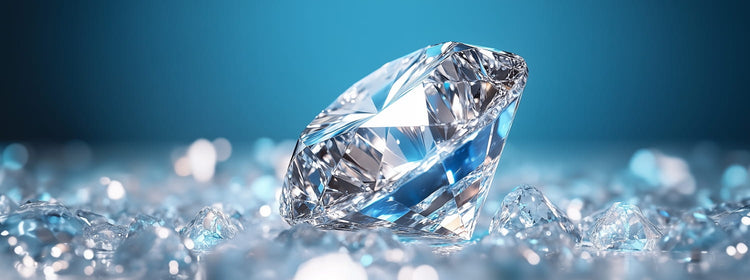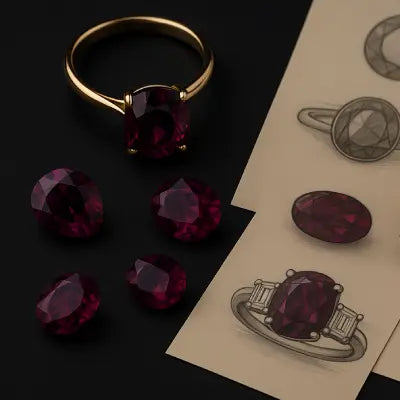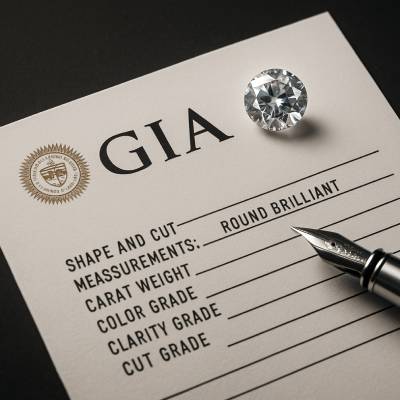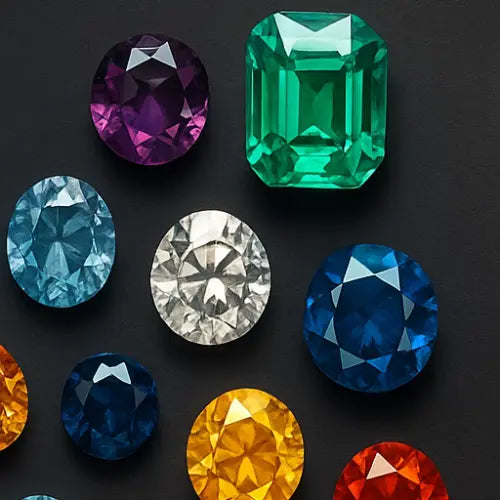Diamonds are often hailed as signs of eternal love and strength. They are prized for their exceptional hardness. Bay Area Custom rings often feature diamonds not only for their brilliance but also for their symbolic durability. Being one of the hardest natural substances on Earth, diamonds have long been associated with indestructibility. However, can diamonds break?
This belief in indestructibility is a misconception. While diamonds are resistant to scratching and chipping, they are not entirely invincible. Under specific circumstances, even the most flawless diamond can break.
This guide delves into the factors that can lead to diamond breakage. It will offer insights into their vulnerability and provide practical tips to protect these precious stones.
Understanding Diamond Hardness vs. Toughness
While diamonds are renowned for their hardness and rank a perfect 10 on the Mohs scale of hardness, this only tells part of the story. Their hardness means they can scratch any other natural material and resist surface damage. However, hardness isn't the only factor determining a material's durability. A diamond's toughness - its ability to resist breaking or chipping - plays an equally crucial role.
Despite their incredible hardness, diamonds are breakable. Their crystalline structure contains specific planes known as cleavage planes where atomic bonds are weaker. These weak points make diamonds vulnerable to breaking if struck with force in the right direction.
Understanding this distinction is crucial: while diamonds are extremely scratch-resistant, they can break under certain conditions. But what breaks diamonds? So, several factors affect a diamond's durability, including its cut, clarity, setting, as well as exposure to improper handling, accidental impacts, and extreme temperature changes.
To protect your diamond jewelry from crack, you can follow these guidelines:
- Never expose your diamond to harsh chemicals
- Avoid extreme temperatures
- Protect it from physical impacts
When removing your jewelry, handle it gently and store it in a safe, padded container. Regular cleaning and inspection will help protect it.
Common Causes of Diamond Breakage
So, what are the common causes of diamond breakage? Understanding these processes can help you protect your jewelry. Among the causes, you can find:
- Physical Impact. Diamonds, like any other material, can crack or break when subjected to sudden, forceful impacts. Dropping or hitting it on a hard surface can generate enough force to cause damage, especially if the impact occurs at a vulnerable point. For example, the girdle (the outer edge of the gem).
- Extreme Pressure and Temperature Changes. While diamonds were formed under immense pressure and heat deep within the Earth, rapid temperature changes can weaken their structure and lead to fractures. This is especially dangerous for diamonds with internal flaws or inclusions, which can act as stress points
- Wear and Tear on Certain Settings. The type of setting used for a diamond can impact its vulnerability to breakage. While many wonder "can real diamonds break?", the answer lies partly in their settings. Prong settings may be popular, but they can expose the diamond's girdle to potential damage. In contrast, bezel settings offer better protection by encircling the diamond with a metal band, helping prevent the breakage that can occur even in genuine diamonds.
Preventative Measures to Protect Your Diamond
These precious stones, with their timeless beauty and enduring value, deserve the utmost care. Here are some preventative measures that will help you protect your valuable gem.
Diamond Care: Storage and Handling Tips from Break:
- Separate Storage. Store items individually in soft pouches or boxes. This helps prevent scratching or damage from other gemstones or metals.
- Gentle Cleaning. Clean your items regularly with a soft, lint-free cloth. Avoid harsh chemicals and ultrasonic cleaners. They can damage the metal settings.
- Temperature Control. Extreme temperatures can affect the metal settings and the gem itself. Store your jewelry in a cool, dry place. Keep it away from direct sunlight.
The setting of a gem is crucial in its protection and can make diamonds easy to break. Consider these options:
- Bezel Setting. This setting completely encircles the gem with a metal band. It provides maximum protection against impacts and loss.
- Halo Setting. A halo of smaller gems surrounds the center stone. It adds elegance and security. The smaller gems act as a protective barrier.
- Prong Setting. It's a classic choice. However, prong settings need regular inspection. This ensures the prongs are secure and not loose.
Regular Inspections and Maintenance:
- Professional Check-ups. Schedule regular inspections with a qualified jeweler. It ensures the integrity of the gem setting. A jeweler can tighten loose prongs. They can replace worn-out components and find potential issues.
- Repolishing and Recleaning. Over time, gems can accumulate dirt and scratches. Periodically, have your items professionally repolished and recleaned to restore brilliance.
Follow these preventative measures. Then, you can enjoy the beauty of your jewelry for years to come. This way, you can avoid the “Is it possible to break a diamond” question. Remember, proper care helps preserve your jewelry's beauty and value.
What to Do if Your Diamond Breaks or Chips

If your gem breaks or chips, it's essential to take immediate steps. They are to prevent further damage. Take these steps:
- Secure the Gem. Carefully retrieve any loose fragments of the gem. Use tweezers or a clean cloth to handle them gently.
- Assess the Damage. Examine the gem and the setting to determine the extent of the damage.
- Consult a Professional Jeweler. Schedule an appointment with a reputable jeweler to evaluate the damage and discuss potential repair options.
The feasibility of repairing a broken or chipped gem depends on the severity of the damage and the type of item. Here are some common repair and repurposing options you can choose when a diamond breaks:
- Re-cutting. If the chip is relatively small and well-placed, a skilled cutter may be able to re-cut the gem to remove the flaw. This process can restore brilliance and value.
- Polishing. For minor surface damage, polishing can help to restore the gem's luster.
- Resetting. If the gem has become loose in its setting or the setting itself is damaged, a jeweler can reset the gem in a new or repaired setting.
- Repurposing. In some cases, a damaged gem may be repurposed into a different piece of jewelry. For example, a ring or earrings.
It's crucial to have adequate insurance coverage for your valuable gem item. This way, you can protect yourself financially if your diamond breaks. If your piece is damaged or lost, insurance can help cover the cost of repairs or replacement. Be sure to review your insurance policy carefully. This way, you can understand its coverage limits and any specific exclusions related to gems.
Also, many jewelers offer warranties on their items. If your jewelry is damaged due to a manufacturing defect or other issue, the warranty may cover the cost of repairs.






